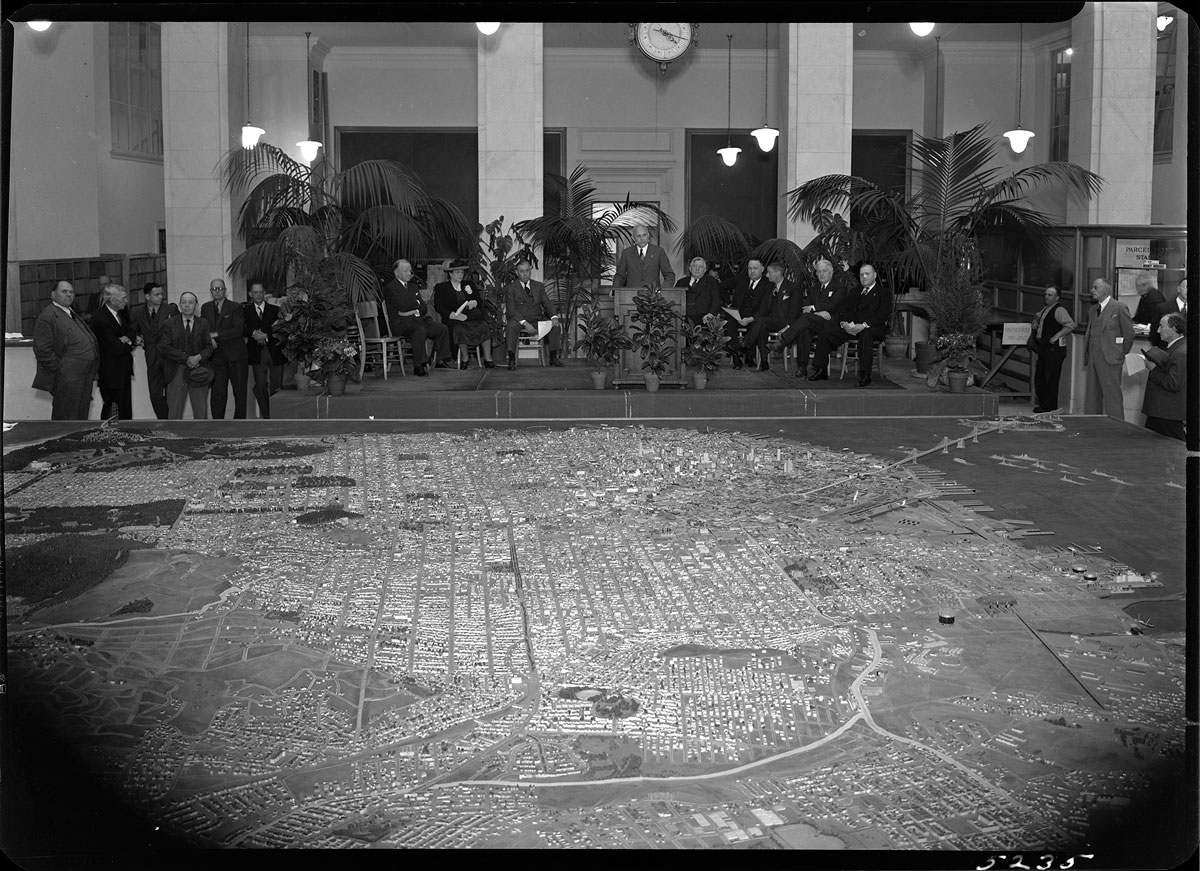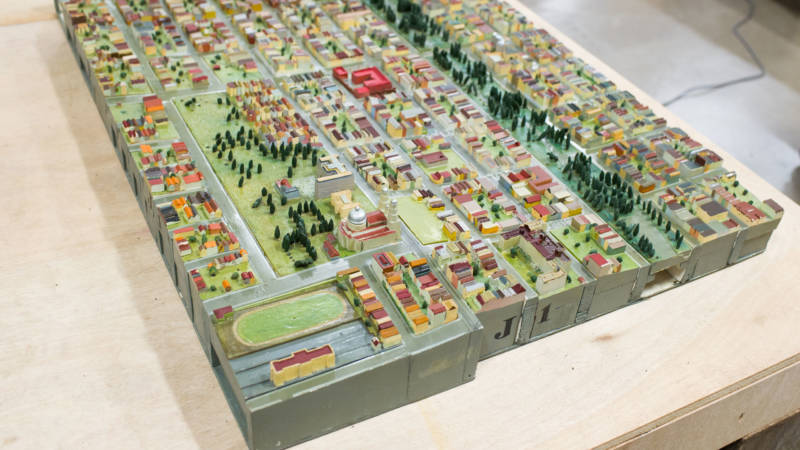The San Francisco Public Library contains multitudes. Yes, books. But also e-books, audiobooks, vinyl records, DVDs, video streaming services, museum passes available for checkout, laptops available for checkout, private study rooms, public meeting rooms, exhibitions, historical documents and photographs, homework help for kids and teens—the list of free and accessible resources goes on and on.
(Those are just some of the many reasons why the San Francisco Public Library received the prestigious “Library of the Year” designation in 2018.)
Over the past few months, along with all of the above, you may have noticed a curious addition to your local branch: a scale model, meticulously hand-painted and labelled, showing a bird’s-eye view of the surrounding neighborhood as it stood eight decades ago.
These displays—there’s one at the Main Branch, at each of the 27 neighborhood branches and the temporary SFMOMA branch—are sections of a 1,000-square-foot model of San Francisco created by the Works Progress Administration (WPA) between 1938 and 1940. And the reason they’re here now is as part of a project punnily titled Take Part, by the collaborative Bik Van der Pol (Rotterdam-based artists Liesbeth Bik and Jos Van der Pol).

Originally meant to be used as a city planning tool, the model was partially displayed during the 1939 Golden Gate International Exposition and last seen in its entirety in 1942, when it was set up in San Francisco City Hall. Then it was packed away in parts by UC Berkeley, with some of the sections remaining in use to evaluate proposed developments in downtown San Francisco. Take Part, a joint project of SFMOMA and the SFPL, brought the model back into the public eye in late January with talks, screenings, craft projects, history nights and other events to engage locals in conversations about the past, present and future of their neighborhoods.


